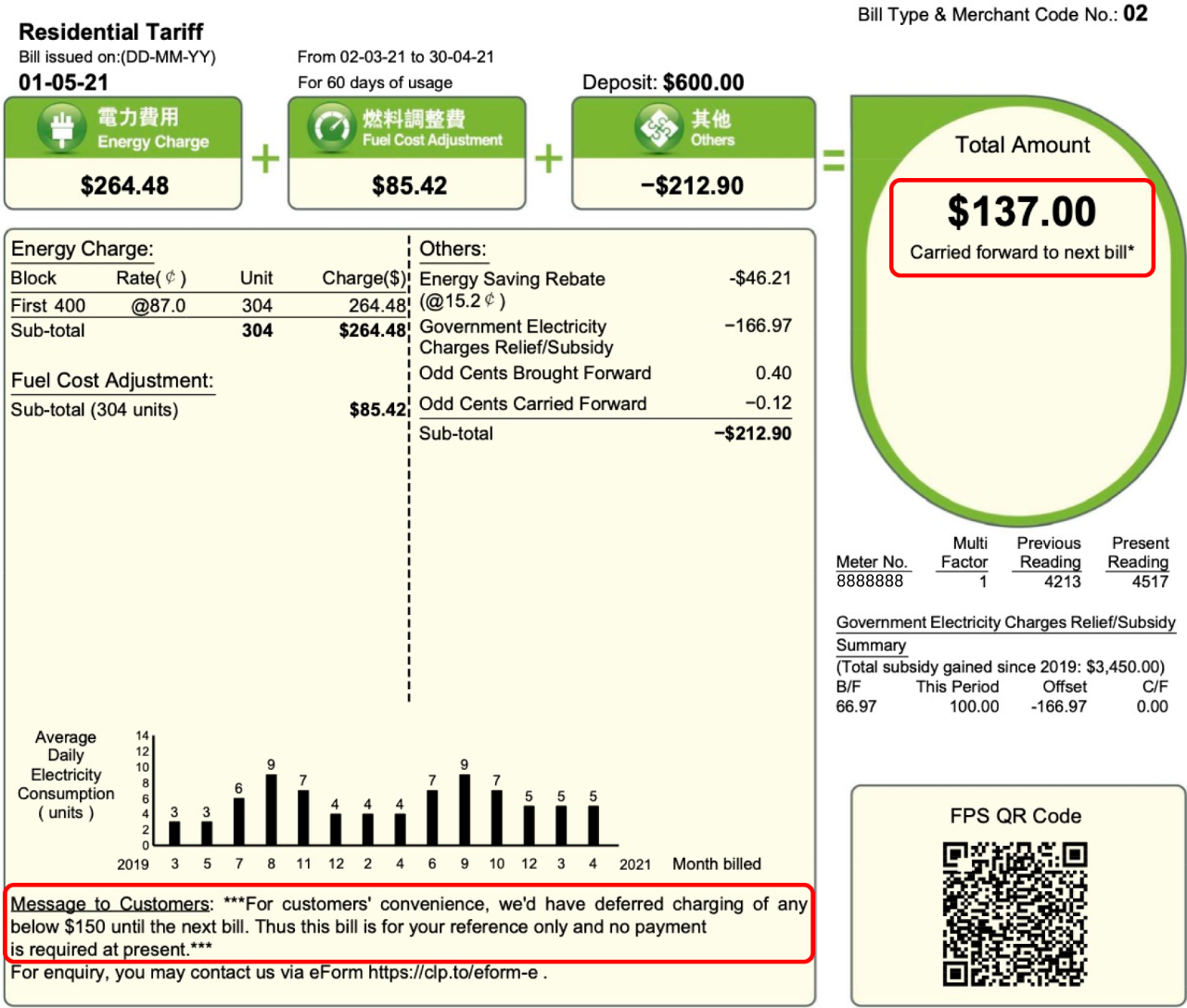Common causes of high bills
Find out the most common reasons for high consumption and how you can manage your energy consumption to save money.
The Fuel Cost Adjustment (FCA) may increase or decrease your bill. It is based on the difference between forecasted fuel prices and actual fuel prices (oil, gas and coal).
During the first half, we saw rising international energy prices and global market volatility that drove fuel costs higher, creating a significant impact on electricity bills around the world and Hong Kong is not immune.
As international fuel prices are expected to remain volatile, we will do whatever we can to mitigate the impact of rising fuel prices.
Learn more about the fuel cost adjustments.
Estimated bills
We issue estimated bills when we cannot access your meter.
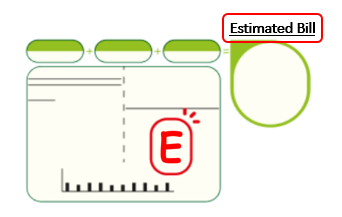
If the letter “E” is marked on top of the bar of the chart, it means the consumption of that month is calculated based on estimated meter reading.
We base our estimation on your usage during the same period last year. If you can access your meter safely, you may provide a self-meter reading to avoid estimated bills.
Estimated bills do not include Energy Saving Rebates. This is because the rebate requires actual meter readings. We will reflect the rebate in your adjusted bill instead.
Amended bills
We issue amended bills when we can access your meter again following a delay. Amended bills revise your estimated bill amount based on the latest actual reading.
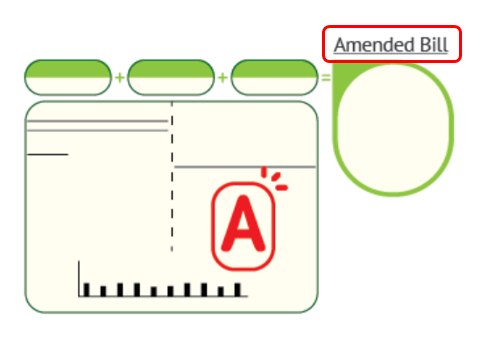
If the letter “A” is marked on top of the bar of the chart and “Amended Bill” is printed above the “Total Amount” box, it means the consumption and tariff amount have been adjusted.

An amended bill should be for the same billing period as the previous estimated bill.
Please be assured that the amended bill has already taken into account all Government subsidies, and your previous payments. Therefore, the outstanding amount – if any – is the actual amount due for payment. If customers make excess payments, it will be reflected as credit in the amended bill.
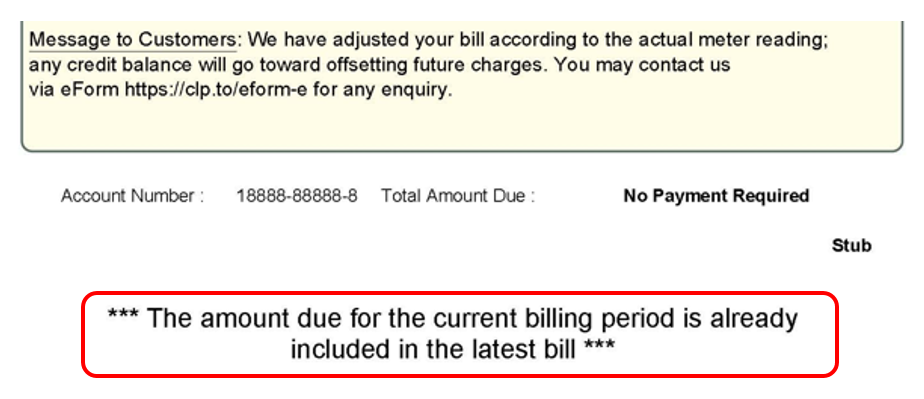
The original bar code will be replaced by a statement to let you know that no payment is required, and that the billed amount is already included in the current regular bill.
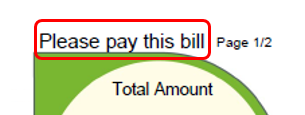
In your current regular bill, you will find ‘Please pay the bill’ printed above the ‘Total Amount’ box. You may pay this total amount to settle your bill.
Adjusted bills
We issue adjusted bills when we can access your meter again. Adjusted bills show the difference between your estimated bill amount and the actual bill amount.
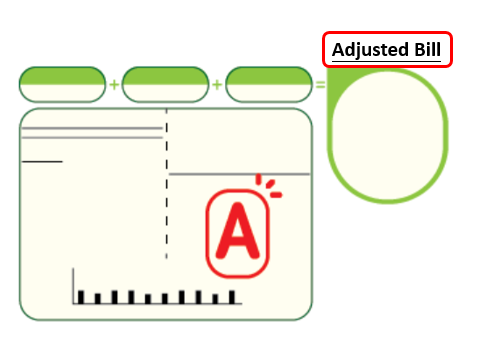
If the letter “A” is marked on top of the bar of the chart and “Adjusted Bill” is printed above the “Total Amount” box, it means the consumption and tariff amount have been adjusted.

An adjusted bill will cover the period of the previous estimated bill, as well as the current bill.
Please note that all adjusted bills are calculated under the block rate system. The first 400 units of total bimonthly consumption is counted as the first block rate. If the bill covers four months in total, the first 800 units will be classified as the first block rate. Customers will therefore not be charged with a higher block rate.
Please be assured that this adjusted bill has already taken into account all Government subsidies, and your previous payments. Therefore, the outstanding amount – if any – is the actual amount due for payment. If customers make excess payments, it will be reflected as credit in the adjusted bill.
What is the difference between an amended bill and an adjusted bill?
An amended bill should be for the same billing period as the previous estimated bill. You may also receive a current regular bill with it in the same envelope. Usually, a residential or non-residential customer will receive an amended bill when a meter reading is obtained following an earlier bill based on an estimate.
An adjusted bill will cover the period of the previous estimated bill, as well as the current bill. Any customer with Feed-in Tariff (FiT) rates or a customised bill (e.g. a group bill) may receive one adjusted bill.
Amended bill example:
Estimated bill period: 05-10-21 to 02-12-21
Access meter reading: 04-02-22
Amended bill period: 05-10-21 to 02-12-21
Current regular bill period: 03-12-21 to 04-02-22
Received number of bills after adjustment: Two
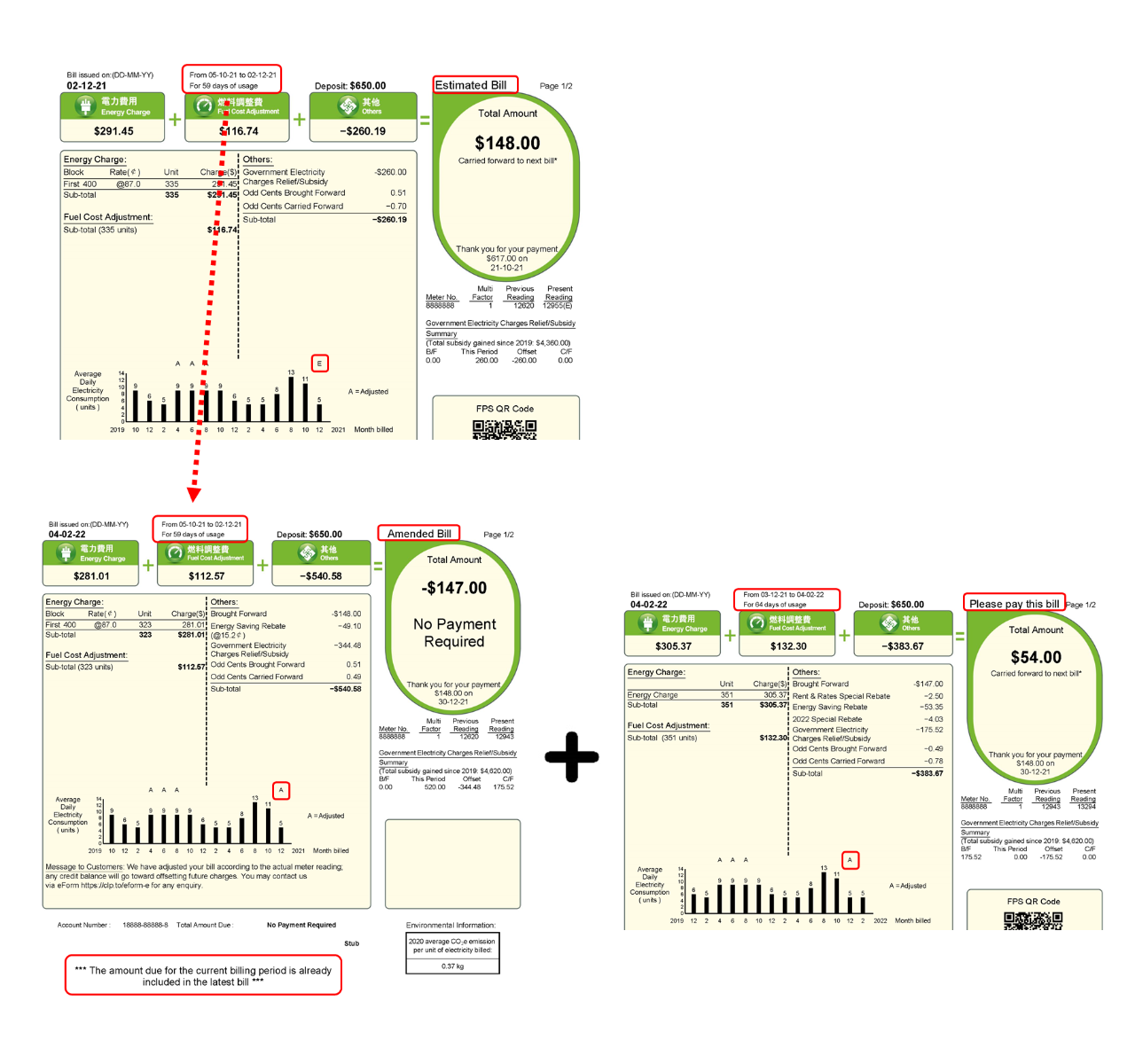
Adjusted bill example:
Estimated bill period: 10-09-21 to 08-11-21
Access meter reading: 10-01-22
Adjusted bill period: 10-09-21 to 10-01-22
Received number of bills after adjustment: One
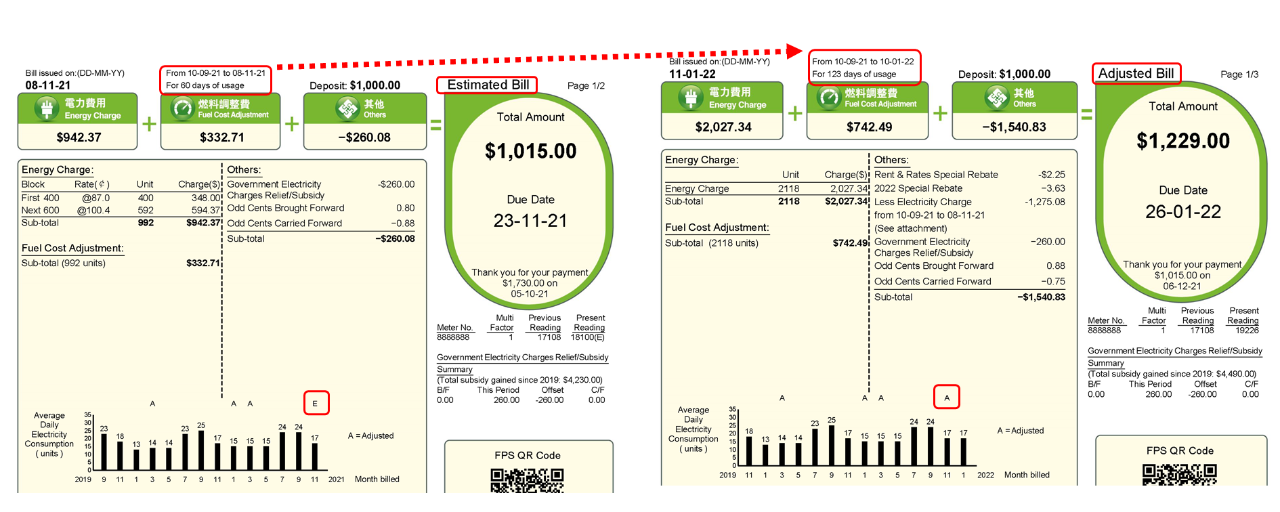
You can check if your high bill amount is due to increased consumption by referring to the bar chart on your bill. The chart shows the average daily consumption of your recent bills. During hot and cold months, your average daily consumption may be higher due to the weather.

Increased consumption may be due to the following factors:
Hot summers and cold winters can spike electricity consumption. Electrical appliances need to run longer to maintain the same temperature and humidity. Even with the same operating hours, consumption may vary based on outdoor conditions.
Weather changes especially affect the electricity consumption of:
- Refrigerators
- Air-conditioners
- Electric heaters
- Dehumidifiers
The location and maintenance of these appliances also affect electricity consumption. For example, a poorly maintained air-conditioner placed in direct sunlight consumes more energy.
Browse our Eco Feed for more energy-saving tips.
Your energy consumption may be higher due to an increase in:
- Household members staying home (e.g. Work from home, school holidays).
- Activities by household members (e.g. Use of air-conditioning).
To check your recent consumption, you can download the CLP app.
The electricity consumption of your appliances depends on:
- Number and type of electrical appliances in your home.
- Each appliance's energy efficiency level.
- Each appliance's working condition.
- Each appliance's operating mode.
Number and type of appliances
The number and type of appliances you own affect your electricity consumption. For example, a new Smart TV set would use more energy than a traditional cathode ray tube TV set. Motor-operated appliances such as refrigerators, washing machines and air-conditioners also use more energy.
You can estimate your appliance's electricity consumption based on its watt unit. For example, a 1,000 watts electrical appliance running for 1 hour is equivalent to 1 unit of electricity.
Energy efficiency
Your appliance's energy efficiency directly affects your consumption. You can check your appliance's energy efficiency through its energy label. The examples below illustrate the expected savings for energy-efficient appliances:
- Air-conditioner - Grade 1 air-cons use 15% less electricity than Grade 3 air-conditioners.
- Refrigerator - Grade 1 refrigerators use 35% less electricity than Grade 3 refrigerators.
- Light bulb - Energy-saving light bulbs uses 75% less electricity than regular light bulbs. They also last 8 to 10 times longer than regular light bulbs.
Learn more about energy efficiency through our Eco Feed. You can also browse, buy and redeem energy-efficient appliances through our store.
Working condition
Your appliance's age and working condition can also affect your electricity consumption. Faulty appliances can lead to surprisingly high bills. Check your appliances regularly to avoid higher than normal bills.
Operating mode
Some electrical appliances such as refrigerators and routers operate 24 hours a day. Even if your flat is vacant, this may lead to similar electricity charges.
Electrical appliances also use electricity when they are in standby mode. To reduce this, unplug or turn off electrical appliances or switches when they are not in use.
Browse our Eco Feed for more energy-saving tips.
Your bill may seem higher if government subsidies are applied to your previous bill. Your bill may also increase due to rate changes. Examples of rate changes include fuel cost adjustments and annual tariff adjustments.
To lower the impact of rate changes, we provide subsidies and support to people in need.
Your bill may be higher if it was carried forward from previous months. This may happen due to late payment or partial payment. You can check if your bill was carried forward by looking for notes under your bill's total amount and bar chart.
If you do not have your previous bills on-hand, you may get a copy of your bill.
